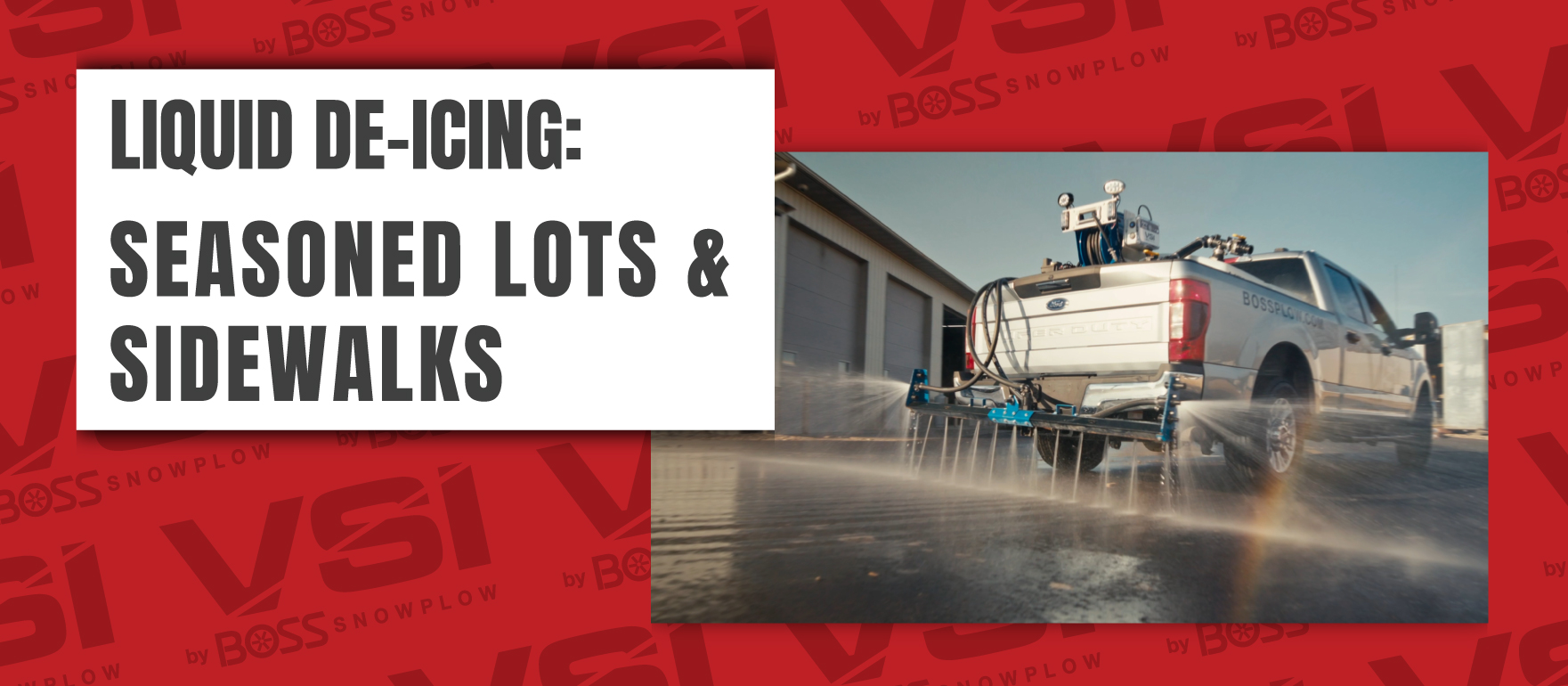Pre- and Post-treating Lots:
Pre-treating parking lots, sidewalks, and parking structures with liquid brine before snowfall helps prevent mild accumulation and, more importantly, prevents the bond of snow and ice to the pavement. This allows better quality mechanical removal of snow and ice to occur thereby mean
ing you need to use less salt or deicer after you plow.
Pre-treating and post-treating parking lots with liquid offers a myriad of benefits, including savings on the cost of application compared to salt and drastically better consistency in application due to simple GPS rate control systems that adjust automatically to apply the correct amount of product regardless of speed.
Post-treating parking lots, sidewalks, and parking structures with liquid brine inter-storm or post-storm is a very viable replacement alternative to the use of rock salt, treated salt, or bagged sidewalk products. By using liquids in your post-treatment applications, you leave your customers’ lots cleaner (no leftover salt or residue), get faster results, have less tracking into your customers’ facilities, there’s lower environmental impact, and many more advantages.
“Seasoned” Lots:
We’ve previously referenced seasoned lots and surfaces. If managed correctly, this is a very underrated concept that can pay off big. Seasoned lots are the concept of maxing out the chloride and additive carrying capacity of the pores in the substance before an early season snow or ice event. This “seasoning” provides the fullest effect out of subsequent treatments. Once built up, this “seasoning” can then be maintained by continuing your regular pre-treat, inter-storm treatments, and post-storm treatments. In some climates with infrequent snow and ice events, this build-up can never occur without this initial seasoning. Therefore, doing this pre-season (as close to projected snow/ice as possible) is a very effective way to get a jump start on the entire season.
Seasoning will be especially effective in low-traffic and high-susceptibility areas such as:
- - Sidewalks
- - Parking Garages
- - North Side of Structures
For this seasoning to be most effective, use at least 5% additive with your brine blends with applications of 40-50 GPA each through 5-6 applications. These applications can be done subsequently, as long as the substrate has dried out before the next application. This seasoning technique will not work on previous surfaces such as permeable asphalt or permeable pavers.
Finally, keep in mind that pre-seasoning is just that. Pre-seasoning is not a replacement for pre-treating right before a storm or post-treating. However, pre-seasoning will make subsequent pre and post-treatments substantially more effective and in warmer climates, you may actually see 2-3 inches of accumulation not occur on your seasoned lots compared to your competitors.

*Image of liquid brine filling Legacy de-icing tank
Sidewalk Applications:
Using liquids as a replacement alternative to bagged ice melt products is a large opportunity for a vast improvement in quality of service and margin. Liquids can easily be sprayed with side booms on spray trucks for any sidewalks that run along curbs as long as there are no cars in the way.
Other liquid options include:
- - Horse Reels
- - Snowrators
- - Walk Behind Spray Units
- - Utility Tractors
- - ATV/UTVs
Easy and inexpensive refill stations on sites or in sidewalk crew trucks can be installed for efficiency. Liquid provides vast labor savings on shoveling as there is no bond of snow or ice to the pavement and the amount of accumulation will be reduced. Always use an 80% salt brine/20% additive on sidewalks for best results and corrosion protection. Once set up with the proper equipment and refill zones, the material and labor savings using liquid on sidewalks will be even more drastic than on parking lots. Furthermore, the level of service will be noticed even more immediately by your customers with NO tracking into buildings, no leftover product, etc.
For the best and most consistent results, we must ensure at least 95% purity of your salt for optimal performance of your brine maker and spray systems. Higher purity salt can easily be sourced for brine making if your current salt is not found.



